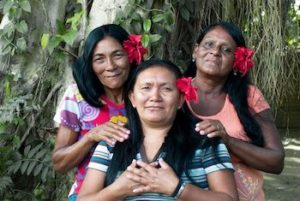
*The Taíno people are celebrated on this date in 1492. They are the indigenous people of the Caribbean who were the first to encounter white Europeans during the Middle Passage.
During European contact in the late fifteenth century, they were the primary peoples of Cuba, Hispaniola (the Dominican Republic and Haiti), Jamaica, Puerto Rico, the Bahamas, and the northern Lesser Antilles. The Taíno were the first New World peoples to engage with Christopher Columbus. They speak the Taíno language, an Arawakan language.
Groups currently identify as Taíno, most notably among the Puerto Ricans, Cubans, Jamaicans, and Dominicans, both on the islands and the United States mainland. Some scholars, such as Jalil Sued Badillo, an ethnohistorian at the University of Puerto Rico, assert that although the official Spanish histories speak of the disappearance of the Taínos as an ethnic identification, many survivors left descendants usually by intermarrying with other ethnic groups.
Recent research revealed a high percentage of mixed or tri-racial ancestry in Puerto Rico and the Dominican Republic. Those claiming Taíno ancestry also have Spanish ancestry, African ancestry, and often, both. The Spanish conquered various Taíno chiefdoms during the late fifteenth and early sixteenth centuries. According to The Black Legend and some contemporary scholars such as Andrés Reséndez, the colonists' warfare and harsh enslavement decimated the population. Men were forced to work on colonial plantations and gold mines; as a result, there was no Taíno left to cultivate their crops and feed their population.
Conversely, most scholars believe that European diseases caused the majority of deaths. A smallpox epidemic in Hispaniola in 1518–1519 killed almost 90% of the surviving Taíno. The remaining Taíno were intermarried with Europeans and Africans and were incorporated into the Spanish colonies. The Taíno were considered extinct at the end of the 18th century. However, since about 1840, there have been attempts to create a quasi-indigenous Taíno identity in rural areas of Cuba, the Dominican Republic, and Puerto Rico.
This movement accelerated among Puerto Rican communities in the mainland United States in the 1960s. At the 2010 U.S. census, 1,098 people in Puerto Rico identified themselves as "Puerto Rican Indian," 1,410 identified themselves as "Spanish American Indian," and 9,399 identified themselves as "Taíno." In total, 35,856 Puerto Ricans considered themselves Native Americans.